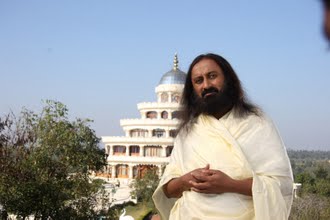
Ayurveda is a treasure-trove containing 3, 000 years of practical knowledge that we can apply successfully in our modern world. YOGI TEA® is based on the ancient traditions of Ayurveda, tailored to the needs and well-being of people.
Ayurveda is…
Applied knowledge – Ayurveda means “knowledge (veda) of life (ayur)”, the art of living a life of balance and well-being.
Ancient – the earliest records date back to 1, 500 BC.
Universal – knowledge of human nature is part of the shared heritage of all peoples and cultures.
Practical – ulfilment is seen as a practical, functional change in life.
Holistic – it sees a human being as one composite unit of body, mind and soul.
Balance – it states that everything depends on the equilibrium of the individual, both internally and externally.
ndividualistic – every person is considered unique and is seen and advised according to their own unique history and constitution.
Preventive – it shows you how to maintain the right balance permanently.
Experience – all the recipes, treatments and advice are based on thousands of experiences.
Comprehensive – in addition to knowledge of over 5, 000 herbs and spices, it includes yoga, meditation, hydrotherapy, massage, astrology and surgery, as well as the use of precious stones, metals, music and dance. In particular, knowledge of a balanced diet has an important central role in the teachings of Ayurveda.
The Three Doshas
According to Ayurveda, the universe is composed of five elements (Tattvas): earth, water, fire, air and ether. Each of these elements is associated with one of three bodily humours or doshas, vata, pitta and kapha.
From birth, everyone has their own specific combination of the three doshas, the so-called ‘prakruti’. That dosha constitution, which is fixed from birth, is the normal balanced state for each individual. One or two doshas will generally predominate; in just a few people, all three doshas may be equally strongly expressed.
Over the course of time, external factors can pull the original state of the doshas out of balance. Ayurvedic methods and procedures offer numerous ways of restoring anyone’s original individual balance of the doshas and safeguarding their health and well-being.

VATA
“Vata” comes from the Sanskrit verb “vah” which means “to move”. Vata symbolises the motive principle in our bodies and it consists of the elements ether and air.
People with a strong vata dosha are often slender and have active minds; they have sensitive nervous and digestive systems. They are sensitive to their environment and have a very good grasp of things. Their skin can feel rather cold, dry and rough. A balanced vata person is cheerful, dynamic and open-minded.
For a balanced constitution, vata types should keep warm and focus on restful activities. They will achieve balance and well-being from a fixed daily routine with frequent, small meals.
PITTA
The word “Pitta” is derived from the Sanskrit the word “tap”, “to heat”. Pitta affects the functions in the body that involve transformations, such as the body temperature and people’s intellectual abilities. Pitta is characterised by the properties of the elements fire and water.
Physically, pitta types are medium weight and the skin is tender and usually feels warm. Pitta types characteristically have a large appetite and a good digestion. Because of their inner fire, they prefer cool surroundings. A balanced pitta type has a strong and charismatic presence, combined with great willpower.
People with a strong pitta dosha enjoy new challenges. They have to be careful not to overreach themselves and not to “overheat”. It is good for them if they maintain a balance between their intensive activities and relaxation. Intensive activities should be kept in balance with relaxation. Pittas should avoid large amounts of salt and hot spices and eat more salads and fresh vegetables.
KAPHA
The word “kapha“ is a contraction of the Sanskrit words “ka“ and “pha“, meaning “water“ and “to flourish“. The effect of kapha is to add form and structure. It represents both physical and spiritual stability and is responsible for keeping vata and pitta within balanced limits. Kapha unifies the principles of the elements earth and water.
People with a dominant kapha dosha often have a rather stout and strong physique. Movement is often a challenge for them because they are attracted to rest and relaxation. To develop a deeper understanding of how things fit together, kaphas may need some time to let them think issues through thoroughly. Once they achieve a good balance, it is hard to disrupt. They are also seen as very reliable.
To maintain their internal equilibrium, it is essential for kaphas to have a regular routine of both physical and mental exercises. In terms of diet, kaphas should focus on sharp and bitter foods and consume fewer sweet treats and less fatty food.
See also:RELATED VIDEO




 Ravi Shankar (Kannada: ರವಿ ಶಂಕರ್ ), usually known as Sri Sri Ravi Shankar, was born Ravi Shankar Ratnam on 13 May 1956. He is also frequently referred to simply as "Sri Sri" (honorific) or as Guruji or Gurudev. He is a spiritual leader and founder of the Art of...
Ravi Shankar (Kannada: ರವಿ ಶಂಕರ್ ), usually known as Sri Sri Ravi Shankar, was born Ravi Shankar Ratnam on 13 May 1956. He is also frequently referred to simply as "Sri Sri" (honorific) or as Guruji or Gurudev. He is a spiritual leader and founder of the Art of...








